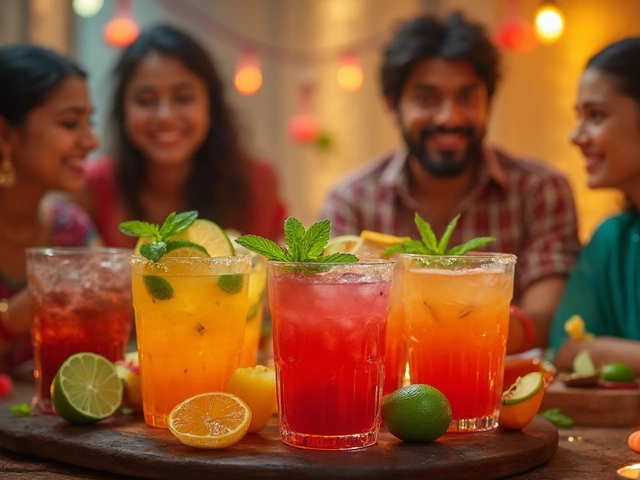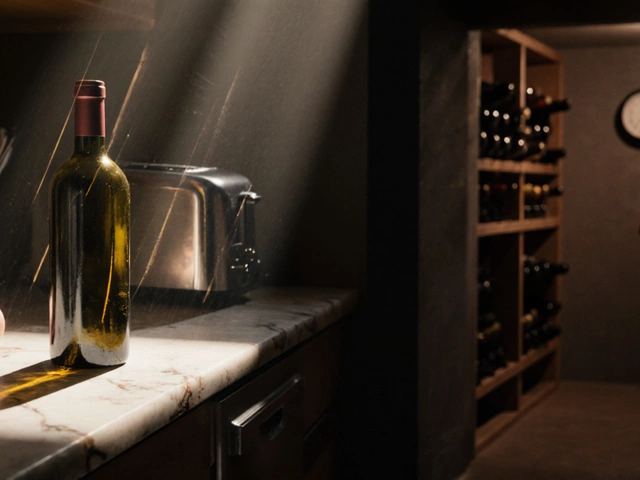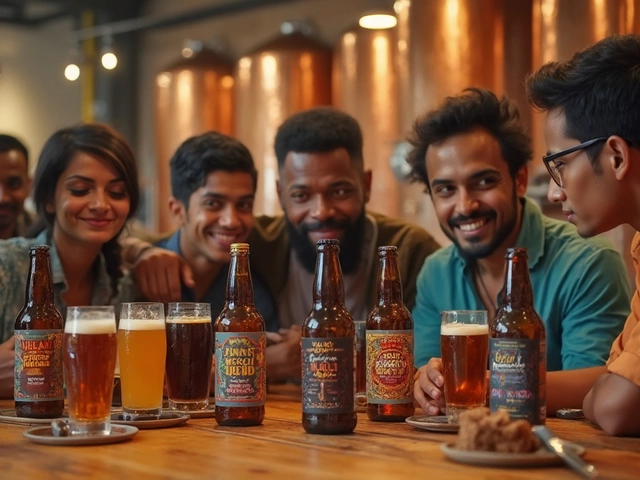
Think beer just popped up at a German festival with big steins and pretzels? Not even close. The story of beer stretches back over 7,000 years, way before anyone knew what Oktoberfest was. The very first brews came from the Middle East, in a region we call Mesopotamia—pretty much where Iraq is now.
Back then, no one was actually trying to invent beer for fun. People were looking for ways to use grains like barley and wheat, and—boom!—someone left a gruel mash out and wild yeasts started bubbling away. Suddenly, people had a fizzy, boozy drink. So, when you sip at a beer festival, you’re part of a tradition that started with farmers and a total accident.
And here’s a pro tip: if you find yourself at a beer festival, check out any ancient beer recreations on tap. Some craft brewers love reviving old recipes, like Sumerian-style brews made with dates and herbs. It’s a chance to literally taste history, so keep an eye on the festival listings for something totally different from your everyday lager.
- Cracking the Origin Story
- Preserving Beer Through History
- How Beer Spread Around the World
- Why Ancient Beer Was Nothing Like Today’s
- Beer Festivals: From Rituals to Revelry
- Tips for Celebrating Beer’s Past at Festivals
Cracking the Origin Story
So, where did beer origins actually start? Archaeologists agree—if you want to thank someone for coming up with beer, you’ve got to go way, way back to ancient Mesopotamia. That’s modern-day Iraq, and we’re talking about 5,000 BCE, which is honestly mind-blowing. This area is also called the "Cradle of Civilization"—it saw the rise of writing, farming, and, yep, ancient beer.
The oldest recipe we know of comes from a Sumerian clay tablet, famous for the "Hymn to Ninkasi." Ninkasi was the goddess of beer, which shows how central beer was even back then. The recipe is pretty basic: barley cakes are crumbled into water and then left to ferment. No fancy hops, just bread, water, and whatever yeast was floating around.
"Beer was not a luxury of the few, but a foundation of everyday life... it was as vital as bread," — Dr. Patrick McGovern, archaeologist and fermented-beverage expert
We also have physical proof: researchers have found chemical traces of fermented grains in 6,000-year-old pots from Iran and Iraq. Historians think beer was probably discovered by accident when someone left a bowl of grain porridge sitting out, and wild yeast did its thing.
Take a look at this timeline—just so you have your facts right the next time someone claims Germans invented beer at Oktoberfest:
| Year (BCE/CE) | Location | Beer Milestone |
|---|---|---|
| circa 5000 BCE | Mesopotamia (Iraq) | First consistent evidence of beer brewing |
| 3400 BCE | Ancient Iran | Chemical traces of beer found on pottery |
| 1800 BCE | Babylon | Beer laws written in the Code of Hammurabi |
| 800 BCE – 500 CE | Egypt, Europe | Beer spreads via trade and migration |
If you run into any beer history trivia questions at your next festival, remember: the answer isn’t Germany or Belgium—it’s ancient Mesopotamia. And that first brew probably tasted nothing like what we drink today. But in its own way, it changed everything, from farming and feasts to the way we celebrate together at modern beer festivals.
Preserving Beer Through History
People loved beer so much that they got pretty clever about keeping it fresh and tasty. The ancient Babylonians, Sumerians, and Egyptians all had their own ways to make sure beer would last. The trick was to store it in cool, dark jars or underground, away from heat and sunlight. These folks didn’t have refrigerators, so they used what they had—think pottery, mud cellars, and some creative sealing methods.
Egyptians are actually famous for making ancient beer in bulk. Workers who built the pyramids drank beer every day, and it wasn’t just for fun—it was safer than the water! They brewed thick, porridge-like beer and stored it in clay jars sealed with reeds or even beeswax. Sumerians, on the other hand, wrote the first known recipe for beer on clay tablets over 4,000 years ago. If you ever see a beer called “kash” at a festival, that’s a nod to what they called their brew.
The preservation game changed big time when people started figuring out fermentation and hops. By the Middle Ages, European monks became masters of brewing. Hops didn’t just give beer flavor—they helped keep it from spoiling, especially when transported long distances. Around the 9th century, German towns saw the rise of the Reinheitsgebot or "beer purity law"—basically, brew with barley, hops, and water, nothing weird. This made beer origins even more important, laying the foundation for modern styles.
For anyone who loves a good stat, check this out:
| Era | Main Preservation Method | Notable Fact |
|---|---|---|
| Sumerians (4000 BCE) | Clay jars, sealing with reeds | World's first written beer recipe |
| Egyptians (2500 BCE) | Clay jars, beeswax seals | Pyramid workers drank beer daily |
| Medieval Europe (800-1500 CE) | Fermentation, hops, cool cellars | Beer purity law changed brewing forever |
If you ever get your hands on a festival pass, check for rare "heritage" brews that use old preservation methods. It's not just about the taste—it's a window into how our ancestors kept their favorite drink safe, cool, and ready for the next toast.
How Beer Spread Around the World
So, how did beer go from ancient clay pots in Mesopotamia to being poured at festivals from Munich to Mexico? Mostly, people just couldn’t stop sharing what they liked. As folks started traveling, trading, and setting up new cities, they brought their styles of beer with them. Ancient Egyptians picked up brewing from Sumerians and made beer a daily drink, not just something for getting buzzed at parties. Old cuneiform tablets even show workers at the pyramids were paid in beer rations. Hard to blame them, honestly.
The Greeks and Romans weren’t as crazy about beer—they loved wine—but beer still found fans on the edges of their Empire, especially in colder northern places. Fast forward to medieval Europe: monks started brewing in monasteries, trying to perfect that golden liquid, and they really kicked off an early craft beer movement. Around the year 800, hops showed up in beer recipes, making beer taste better and last longer. That changed everything. Suddenly, beer could travel further without turning sour.
| Region | How Beer Arrived | Unique Local Twist |
|---|---|---|
| Mesopotamia | Birthplace of beer | Used bread as starter |
| Egypt | Through Sumerian trade | Added dates and honey |
| Europe | Spread by Greeks & Romans, monks | Brought in hops |
| China | Independent invention | Rice-based beers |
| Americas | Arrived with European colonists | Corn and local ingredients |
The beer origins story is all about sharing and adapting. Every time beer landed in a new place, locals mixed in their own grains, fruits, and spices. That’s why you’ll find barley beers in the West, sorghum beer in Africa, rice lagers in Asia, and chicha made from corn in Peru. Talk about versatility!
If you’re hitting a beer festival anywhere, check what regional brews are on tap. Local favorites can be miles away from what you’re used to, and tasting them is a crash course in the world’s history. Ask for the weirdest option—you’ll probably end up with a cool story and a new favorite sip.

Why Ancient Beer Was Nothing Like Today’s
So, you love cracking open a cold beer, but imagine if that brew was thick, cloudy, and full of floating chunks. That’s how ancient beer looked and tasted—totally different from anything you’d find at today’s beer festivals.
First off, there was no hops in the mix. Today, hops give beer that crisp, bitter bite and long shelf life. Back then, brewers just used whatever was around—dates, honey, herbs, sometimes even tree bark—for flavor and some very questionable preservation. The end result? Beers that were sweet, sour, and honestly, kind of funky.
Forget about popping a cap on a glass bottle or pouring from a can. Ancient Sumerians drank their ancient beer out of big, communal pots using long reeds as straws. There was no filtering, so you had to poke through a layer of grain gunk to get to the liquid underneath. Not the clean, clear pour most of us expect now!
| Feature | Ancient Beer | Modern Beer |
|---|---|---|
| Flavors | Herbs, honey, sour notes | Wide variety (hoppy, malty, fruity) |
| Appearance | Cloudy, thick, chunky | Clear, filtered, carbonated |
| Bottling | None (communal pots) | Glass bottles, cans, kegs |
| Main Ingredients | Barley, wheat, local additives | Barley, hops, yeast, water |
Here's what a Yale University cuneiform expert, Dr. Samuel Noah Kramer, once said:
“Sumerian beer was more like a thin porridge than a beverage by modern standards.”
And there’s even evidence that beer had a low alcohol content, barely strong enough to feel much of a buzz, but probably safer than drinking river water.
Bottom line: Your favorite beer today is way smoother, fresher, and loads tastier than anything the ancient brewers ever managed. It’s a far cry from the chunky brews that kicked off this whole beer history in the first place.
Beer Festivals: From Rituals to Revelry
Long before the modern beer festivals with music tents and plastic cups, drinking beer was deeply tied to religion and community. Ancient Sumerians had rituals honoring Ninkasi, their goddess of beer—and folks believe they even sang hymns to her while brewing. Festivals then were about more than just drinking; they were about giving thanks for harvests, bonding, and yes, a little bit of letting loose.
By the time the Middle Ages hit, Europeans started to organize proper public celebrations that look a bit like festivals today. But the big one everyone talks about is Oktoberfest in Munich, which kicked off in 1810 as a royal wedding celebration and just kept growing. According to the official Oktoberfest website, "Over six million people from all over the world visit Oktoberfest every year and drink almost seven million liters of beer."
“Beer has always brought people together, from the earliest Mesopotamian rituals to the record-breaking crowds at Oktoberfest,” says beer historian Dr. Jane Peyton.
Different regions soon put their own spin on the concept. In Belgium, beer festivals are loaded with rare Trappist ales and specialty brews, while the U.S. loves craft beer gatherings with food trucks, live bands, and games. You’ll even find ancient-style celebrations in places like Peru, where chicha—a corn-based ancestor of beer—is poured at traditional festivals.
Why have beer festivals stayed so popular? Here’s what people say:
- They celebrate local and global beer origins.
- You get to sample brews you can’t find anywhere else.
- They help small breweries connect straight with drinkers.
- It’s a social thing—sharing stories over a beer builds real connections.
One thing’s clear: whether you’re raising a glass at a massive beer history event or a cozy local gathering, you’re tapping into a tradition as old as civilization itself. Don’t be surprised if you stumble on a few ancient rituals hidden among the food stalls and tasting tents.
Tips for Celebrating Beer’s Past at Festivals
So, you want to really do justice to beer origins at your next festival? You’re in for more than just drinking; you can actually step into history, if you know where to look. Here’s how to add some ancient flavor to your next beer festival experience:
- Seek Out Ancient Beer Booths: Festivals like the Great American Beer Festival and Belgium’s Zythos Beer Festival often feature breweries recreating ancient styles—including Sumerian brews with honey and dates or Egyptian-style beers fermented in clay pots.
- Read the Tasting Notes: If you spot a beer labeled as “historic,” check the brewer’s notes. Some list the original region, ingredients, or even brewing methods based on old texts or archaeological finds.
- Take the Educational Tours: Larger fests sometimes offer history walks or talks. A popular fact: Archaeologists have found 6,000-year-old beer recipes on Sumerian clay tablets, and some festivals explain how these inspired today’s ancient beer trends.
- Dress for the Era: Don’t be afraid to get silly. Ancient Sumerians wore simple tunics—nobody expects full cosplay, but a fun headband or tote with a cuneiform pattern can spark conversations about who invented beer.
- Pair Food the Old-School Way: At global festivals, look for food that matches up with old brew origins. Think flatbreads, dates, nuts, and cheeses, which Mesopotamians actually ate.
One more thing: festivals today are massive. For example, Oktoberfest in Munich draws over 6 million visitors per year. That’s a far cry from ancient rituals with a few dozen people, but the goal’s the same—celebrate good drinks and even better company.
And if you really want to impress your friends, drop the fact that Mesopotamia’s ancient city of Godin Tepe is one of the oldest places on earth with physical evidence of beer history. A true beer fan never stops learning—or tasting.





Categories